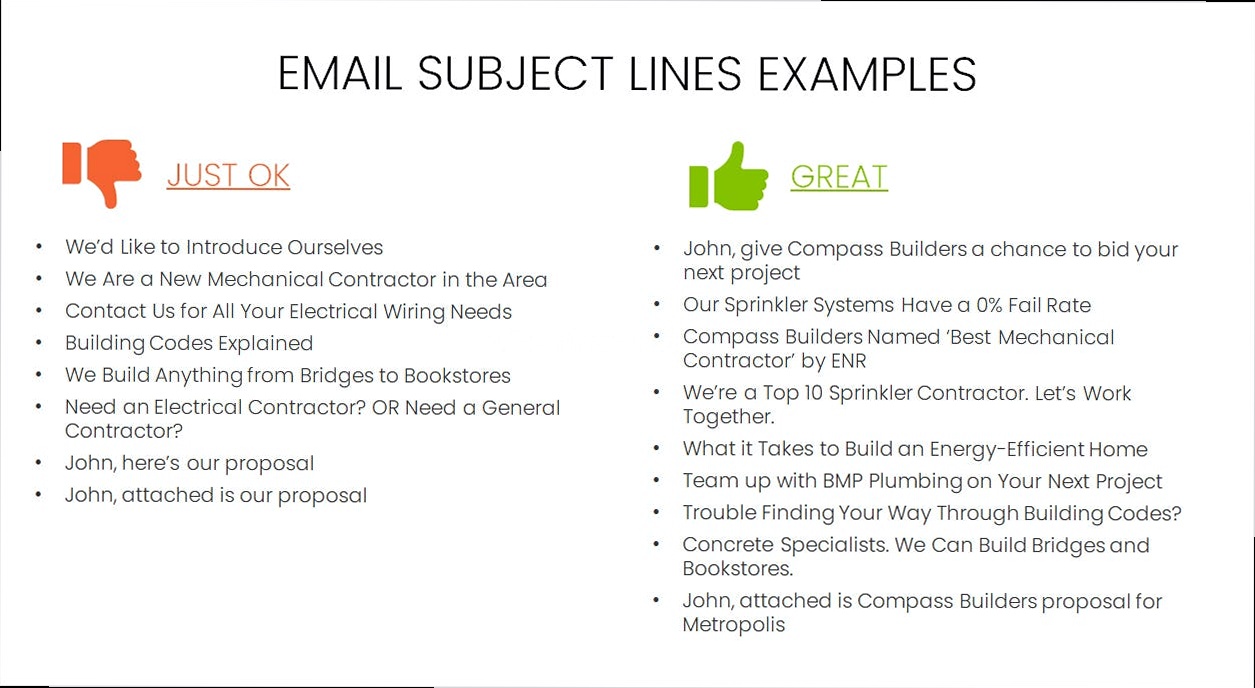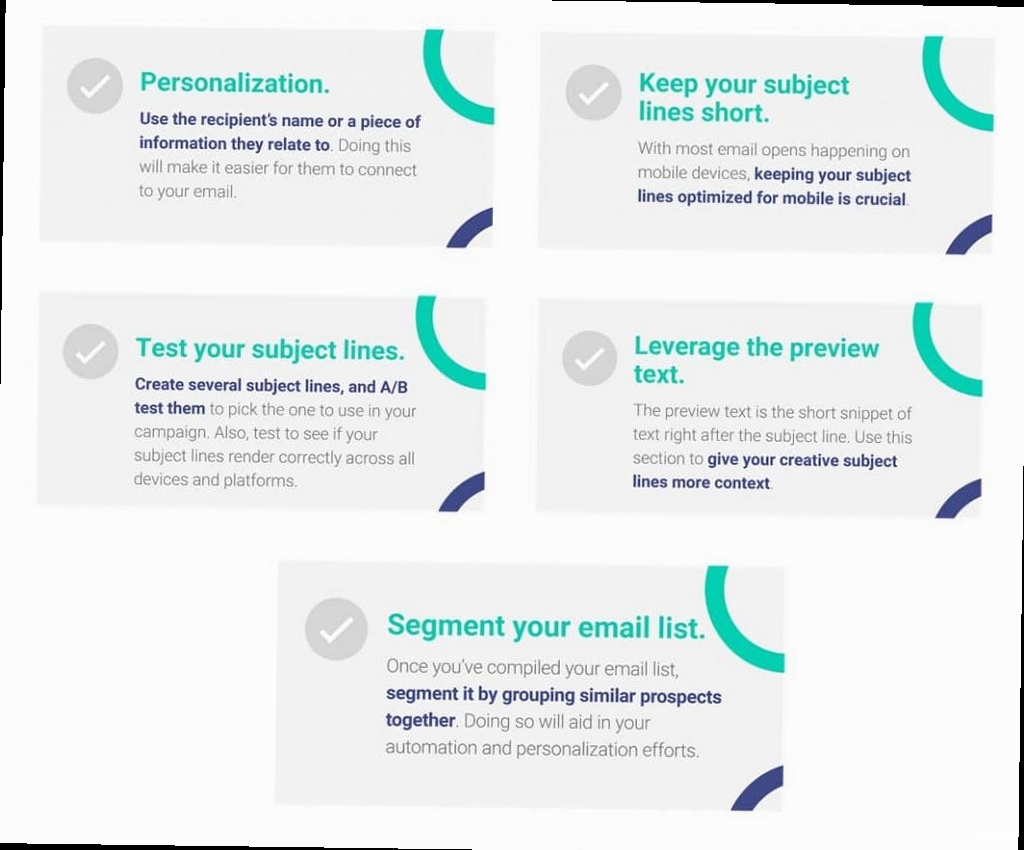Crafting Irresistible Cold Email Subject Lines: A Technical Guide
In the competitive world of sales and marketing, a compelling subject line is the key to unlocking engagement with cold emails. A poorly crafted subject line can doom your message to the spam folder or, at best, a quick deletion. This article dives deep into the technical aspects of creating subject lines that cut through the noise and grab the recipient’s attention, focusing on strategies that leverage data, personalization, and psychological principles.
We’ll explore specific techniques and tools to optimize your subject lines for maximum impact, providing actionable examples you can implement immediately to improve your cold email campaigns.
Personalization at Scale: Dynamic Subject Line Generation

- Merge Fields in CRM Systems: Most CRM systems like Salesforce, HubSpot, and Zoho CRM offer merge fields. These allow you to insert personalized information directly into your subject lines.
- Conditional Logic: Use conditional logic to tailor the subject line based on specific data points. For example, if the recipient is a CEO, use “A Quick Question for [Company Name] CEO”. If they are a Marketing Manager, use “Improving [Company Name]’s Marketing ROI”.
- API Integration: Integrate your email marketing platform with APIs that provide real-time data enrichment. This can include company news, recent social media activity, or industry-specific trends.
- Navigate to your email draft.
- Click “Personalize” in the subject line field.
- Choose a contact property, such as “First Name” or “Company Name”.
- The corresponding personalization token will be inserted (e.g.,
{{contact.firstname}}or{{company.name}}).
- Add an “If/Else” block to your campaign.
- Create a condition based on a custom field (e.g., “Job Title”).
- If “Job Title” contains “CEO”, use the subject line “Exclusive Insights for CEOs”.
- Else, use a more generic subject line tailored to other roles.
import clearbit
import requests
clearbit.key = 'YOUR_CLEARBIT_API_KEY'
def generate_subject_line(email):
try:
person = clearbit.Enrichment.find(email=email, stream=True)
if person and person['person'] and person['company']:
company_name = person['company']['name']
industry = person['company']['category']['industry']
return f"Improving {industry} Strategies at {company_name}"
else:
return "A Quick Question"
except requests.exceptions.RequestException as e:
print(f"Error: {e}")
return "A Quick Question"
# Example usage
email_address = "john.doe@example.com"
subject_line = generate_subject_line(email_address)
print(f"Subject Line: {subject_line}")
“Generic is the enemy. Personalization is the key to unlocking higher engagement and conversion rates.” – Neil Patel, Digital Marketing Expert
The Power of Curiosity: Intrigue and Open Loops

- Question-Based Subject Lines: Asking a relevant question can instantly engage the recipient’s mind.
- Teaser Subject Lines: Hinting at valuable information or a solution without revealing the specifics.
- Intriguing Statements: Making a bold or unexpected statement that sparks curiosity.
- “Is [Company Name] missing out on [Specific Benefit]?”
- “Struggling with [Specific Pain Point]?”
- “Curious about [Industry Trend] at [Company Name]?”
- “A quick tip to boost [Specific Metric] by X%”
- “Secret weapon for [Specific Task] revealed”
- “Unlock [Desired Outcome] with this simple trick”
- “[Competitor Name] is doing this… are you?”
- “You won’t believe what we discovered about [Industry Trend]”
- “The truth about [Common Misconception]”
import random
benefits = ["increased efficiency", "reduced costs", "improved customer satisfaction"]
metrics = ["conversion rates", "website traffic", "lead generation"]
def create_teaser_subject_line():
benefit = random.choice(benefits)
metric = random.choice(metrics)
percentage = random.randint(10, 50)
return f"A simple strategy to boost {metric} by {percentage}% with {benefit}"
# Example usage:
subject_line = create_teaser_subject_line()
print(subject_line)
Urgency and Scarcity: Time-Sensitive Subject Lines
Creating a sense of urgency or scarcity can be a powerful motivator. People are more likely to take action when they believe an opportunity is limited or time-sensitive. However, it’s crucial to use urgency and scarcity tactics ethically and genuinely. False or misleading claims can damage your reputation and lead to negative consequences.- Limited-Time Offers: Highlighting a promotion or discount that is only available for a short period.
- Scarcity of Resources: Emphasizing the limited availability of a product, service, or opportunity.
- Deadlines and Timelines: Setting a specific date or time by which the recipient needs to take action.
- “Exclusive Offer: 20% off until Friday!”
- “Last Chance: Free consultation ends soon”
- “Limited-Time Deal: Upgrade now and save!”
- “Only 5 spots left for our webinar!”
- “Limited availability: Book your demo today”
- “Exclusive access: Invitation only”
- “Register by midnight to secure your spot”
- “Final reminder: Application deadline approaching”
- “Reply by [Date] to claim your free gift”
import datetime
def generate_urgent_subject_line(days_remaining):
today = datetime.date.today()
deadline = today + datetime.timedelta(days=days_remaining)
deadline_str = deadline.strftime("%B %d")
return f"Don't miss out! Offer ends {deadline_str}"
#Example usage
subject_line = generate_urgent_subject_line(3)
print(subject_line) # Output will be something like: Don't miss out! Offer ends July 27
Navigating the Anti-Spam Fortress: Subject Line Best Practices
Even the most compelling subject line is useless if your email ends up in the spam folder. Understanding how spam filters work and adhering to best practices is crucial for ensuring deliverability. Spam filters analyze various factors, including the subject line, email content, sender reputation, and recipient engagement.- Avoid Spam Trigger Words: Words like “free,” “guarantee,” “urgent,” and excessive use of exclamation points can trigger spam filters.
- Keep it Short and Sweet: Long subject lines are often truncated, reducing their impact. Aim for under 50 characters.
- Personalize and Segment: Sending targeted emails to specific segments can improve engagement and reduce spam complaints.
- A/B Test Your Subject Lines: Experiment with different subject lines to see what resonates best with your audience.
| Category | Spam Trigger Words |
|---|---|
| Promotional | Free, Discount, Offer, Bonus, Limited Time, Special, Deal |
| Financial | Loan, Mortgage, Debt, Credit, Cash, Money, Investment |
| Urgency | Urgent, Important, Act Now, Don’t Miss Out, Limited Supply |
| Exaggerated Claims | Guarantee, Best, Amazing, Incredible, Miracle, 100% |
| Suspicious | Dear Friend, Congratulations, Winner, Click Here, Password |
- Too Long: “Exclusive offer for our valued customers: Get 50% off all products this week only! Don’t miss out!” (100+ characters)
- Concise: “50% Off This Week Only!” (25 characters)
- Create a new campaign in Mailchimp.
- Choose the “A/B Test” campaign type.
- Select “Subject Line” as the variable to test.
- Create two different subject lines (e.g., “Improve Your Sales ROI” vs. “Increase Sales ROI”).
- Define your test criteria (e.g., open rate, click-through rate).
- Send the test to a small segment of your audience.
- Mailchimp will automatically send the winning subject line to the rest of your list.
spam_words = ["free", "urgent", "guarantee", "discount"]
def check_spam_words(subject_line):
subject_line = subject_line.lower()
for word in spam_words:
if word in subject_line:
return True
return False
# Example
subject = "URGENT: Claim Your FREE Gift!"
if check_spam_words(subject):
print("This subject line contains spam words!")
else:
print("This subject line is likely safe.")
